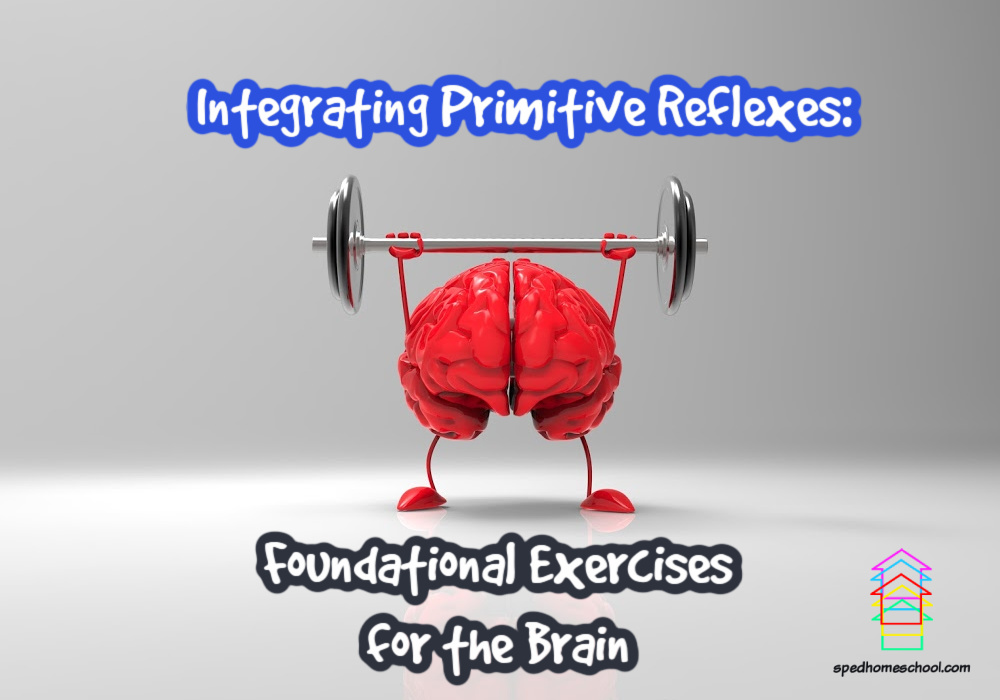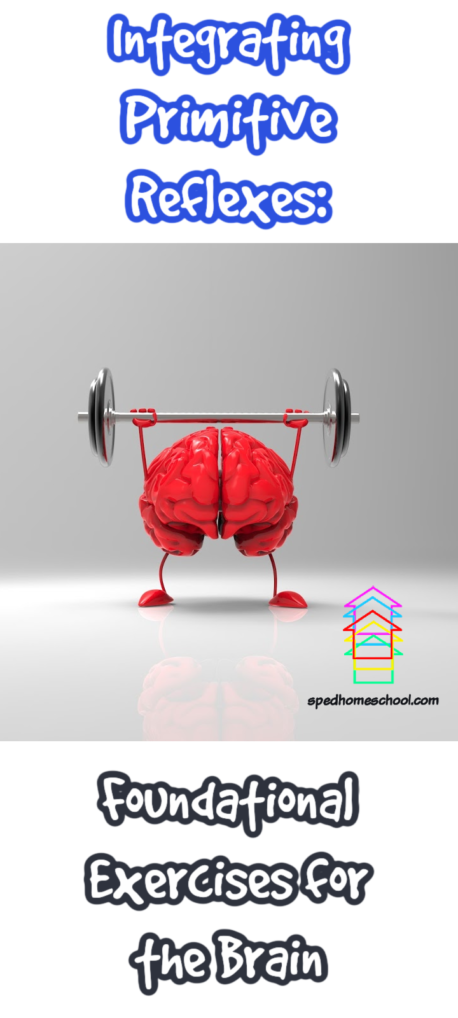
Rebecka Spencer, SPED Homeschool Consulting Partner
A few weeks ago, I shared a story about our daughter’s experience starting school, a life-changing autism diagnosis, and our successes in addressing underlying issues through exercises like Brain Hemispheric Integration. I also mentioned the significance of something called primitive reflexes.
What are Primitive Reflexes?
Primitive Reflexes are the special reflexes that develop in the brain stem before birth. This set of involuntary primitive reflexes help the baby with positioning in the womb, birthing, the first breath of life, feeding, urination, etc. Most of these reflexes go away in the first year of life as higher brain functions begin to control development. If the reflexes remain, though, they can interfere with the neurological organization of the brain and can cause learning, behavioral, social, sensory, and health problems. These remaining reflexes are unnoticed muscle movements in older children and adults that are not normally noticed if one isn’t looking. They cause ongoing issues until they are resolved through exercise.
Why Are Primitive Reflexes Important?
Retained primitive reflexes have been found to cause neurological underdevelopment in some areas affecting learning, behavior, development, vision, and sensory processing. Children with autism spectrum disorder often benefit from primitive reflex integration. Research has indicated there is a relationship between the retention of infant reflexes and a wide range of neurodevelopmental disorders like autism.
Symptoms when Primitive Reflexes Remain:
Because primitive reflexes start at the base of the brain. Functions that try to develop above them cannot wire properly. It can cause or contribute to:
- Autism
- Autism Spectrum Disorders
- Asperger’s
- Hemispheric Imbalance
- Sensory Processing Disorders
- Hyperactivity
- ADHD
- Speech Disorders
- Social Disorders
- Asthma
- Dyslexia
- Dysgraphia
- Dyscalculia
- Immune Problems
- Other Health Issues
- Other Learning Disabilities
There are many children and adults that, for one reason or another, still have one or more primitive reflexes remaining. Some causes may include a traumatic birth, lack of tummy time, too much time laying in seaters or swings, induced labor, and traumatic C-Section birth. Most of the time, there is not a known reason.
If any of them remain past 12 months, they are called Retained Primitive Reflexes, and they are a problem. There are simple exercises that can solve each one. This process is called Integrating Primitive Reflexes. Once they are integrated through these little exercises, many learning disabilities, behaviors, sensory disorders, and health issues disappear or greatly improve. You need to check for each of them, even if your child is not displaying the usual symptoms. If one remains unnoticed, it slows improvement in cognitive function.
“While we do not fully understand autism, primitive reflexes, and the marvels of the brain and its development, the first rule of thumb with Cherish Children Ministries is to give yourself grace and do not blame yourself. “
Simple assessments and exercises can be done 10 minutes per day for a few months to integrate reflexes. Then, you can stimulate the other brain functions with additional cognitive exercises and symptoms improve.
After any diagnosis, primitive reflexes are one of the first things to check. Primitive reflexes can appear with many diagnoses but are the foundation for other therapies. Other therapies or brain stimulation, such as Hemispheric Integration Therapy, work best if retained primitive reflexes are already integrated or are being exercised simultaneously. When we assessed our daughter for retained primitive reflexes and completed exercises to integrate those reflexes, she began to succeed with higher-level learning.
While we do not fully understand autism, primitive reflexes, and the marvels of the brain and its development, the first rule of thumb with Cherish Children Ministries is to give yourself grace and do not blame yourself. There is a wide range of reasons these things occur, so rest assured it is not your fault.
Our struggling learner with autism is now finishing up her eighth-grade year, and we continue sessions together to make sure we are exercising the needed areas. She is excited about the future and wants to enter the field of education!
Interested in learning more on this and other autism related research? Use this link to receive research updates from Dr. Rebecka

